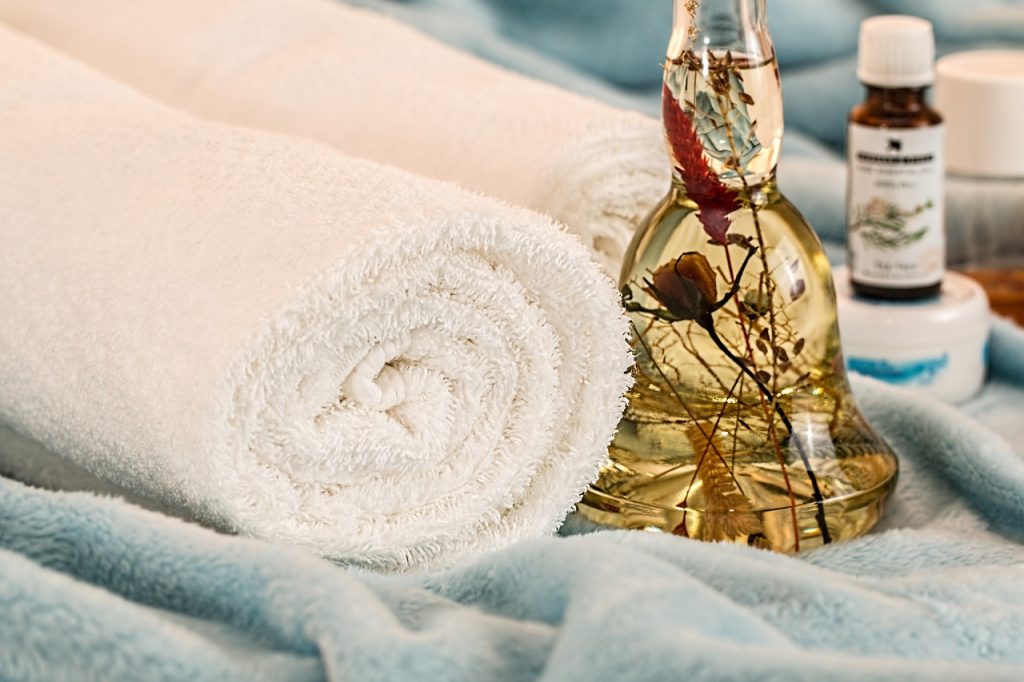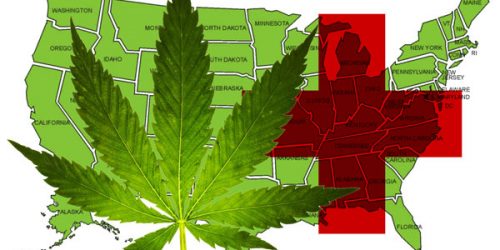Harmful ingredient commonly found in skincare products excluding alcohol

The harmful ingredient commonly found in skincare products excluding alcohol.
by FEROZUDDIN NOHRI (Chemistry Teacher on 1on1)
Skin care products are used widely in woman around 12 personal care products in a day having different harmful ingredients mostly in the form of chemicals.
Now skin care specialists have compiled a data of those harmful ingredients that are present in beauty and skin care products. They look out for on the labels of our skin care products and how these ingredients are associated with a host of health problems.
In a separate alarming research, it was revealed that the skin absorbs up to 60 % of the chemicals in products that it comes into contact with directly into the bloodstream. We put on our skin should be as clean as what we eat. But for most people are unaware of the situation.
Even fewer amounts of the product, many of the chemicals commonly found in our products can have a tremendous health and hormonal impact, and we are far away to understand the consequences.
Here are some harmful ingredients commonly found in skin care products which are discussed with the explanation.
✔Paraben
Parabens are used in skin care products for the preservation purposes. It is a common type of preservative used in skin care products to keep the product fresh. Also, prevent the product from harmful bacteria. Research has proved that it is an inexpensive and effective way to prevent the product from the external atmosphere.
Parabens resist the bacterial, fungal and other micro-organisms growth in skin care products, particularly in hot and humid conditions. It is played a vital role as the preservative in different other cosmetics products.
Research Studies has proved that paraben is naturally organic compound. From research at Colorado State University after several years after their publication has proved the right choice.
Fact is that parabens can exist naturally but rejected the myth of their sources from vegetables and fruits. However, they have great concerns over the health issues due to the usage of parabens.
Companies of Skincare and other cosmetics are facing high pressure from consumers and health practitioners that reduce or remove out parabens from their products.
Alternative of parabens are probably Phenoxyethanol, Sodium Benzoate (and Benzoic Acid), and Benzyl Alcohol.
Phenoxyethanol can be used in the EU at up to 1.0 % in all product categories. Its safety has been re-confirmed recently by the SCCS9 and no regulatory uncertainty is identified at mid to long term. The optimum pH should between 4 and 9 and, like the parabens; it has the advantage to be inexpensive and the disadvantage to be incompatible with most of the non-ionic surfactants.
Sodium Benzoate (and Benzoic Acid), in combination with Potassium Sorbate, is also an acceptable alternative. Sodium Benzoate levels can be used as:
-
-
- 2.5% in rinse-off products
- 1.7% in oral care products
- 0.5% in leave-on products
- 0.06% and above shows activity against yeast and mold
-
Sodium Benzoate (and Potassium Sorbate) are inexpensive and can be easily sourced from nature.
Similarly, Benzyl Alcohol can be a valid choice. Active against Gram+ bacteria from 25 ppm, it will generally be combined with acetic acid can be more active against yeast and mold. Benzyl Alcohol can be used at up to 1.0% and Acetic Acid (anhydrous) up to 0.6%. This combination will be preferably used at a pH between 3 and 5. Incompatibility is low except the non-ionic surfactants and this combination can be sourced from nature.
Formaldehyde
In pure form, formaldehyde is a colorless gas. It can’t use as a cosmetic ingredient. Formaldehyde mixes with water and used as Formalin. Other ingredients that slowly release Formaldehyde may also be added to skin care products as preservatives.
Formaldehyde acts as an anti-bacterial preservative to reduce the growth of bacteria in the product. A minimal amount of formaldehyde is harmless to use the product.
Formaldehyde naturally present at low levels in many things, including plants, smoke, and food. In low levels, it can be safely and legally used in skin care products.
Nowadays the cosmetics industry is alternatively used as formaldehyde releasers because they are economically feasible. They are knowns as irritating the skin, and time released preservative commonly used in stores and bathroom shelf.
Using a single product with a formaldehyde-releasing preservative may not a health risk, but that product might not be the source of exposure. Many products that we use on a daily basis contain these ingredients.
As like formaldehyde, formaldehyde-releasing preservatives are also known allergens and sensitizers. The commonly used formaldehyde-releasers to avoid are:
- Imidazolidinyl urea
- Diazolidinyl Urea
- Bronopol
- DMDM hydration
- Sodium hydroxymethylglycinate
- 5-Bromo-5-nitro-1,3-dioxane
- Quaternium-15
Sodium lauryl sulfate
It is a versatile ingredient composed of non-volatile alcohols. It is added in skin care products because of surfactant nature, but can also be used as a skin-conditioning agent, emulsifier, and solvent. Sodium lauryl sulfate is one of the most sensitizing properties of cleansing agent in skincare products. Sodium Lauryl Sulphate is the ingredient that turns a squirt body wash into a smooth leather. This allows the product to cut through oil and residue and leaves your skin feeling beautifully clean.
Actually, it is synthetic detergent, emulsifier and anionic surface active agent, the purposes of this chemical is makes bubbles. Also used in different other cosmetic industry use. Such as car wash soaps, engine degreasers, and floor cleaners. As an emulsifier, it helps in to stabilize and thicken solutions with ingredients of differing solubility. This allows products to achieve a more uniform for easier and smoother application.
All natural skin care brand that uses natural and organic high-quality ingredients in concentrations that nourish skin uses premium quality Sodium Lauryl Sulphate in their Cleansers because they know it is safe, gentle and effective, even on sensitive skin. They don’t use the cheaper, commonly used ‘natural’ alternatives to SLES, such as Decyl Glucoside, Sodium Cocoyl Isethionate, and Sodium Cocoyl Glutamate. This is because they are made in a sulphuric acid reaction and neutralized with sodium hydroxide, which reacts with the natural sebum in the skin and clogs pores.
Natural Sodium Lauryl Sulphate is extracted from the flesh of sustainably harvested coconuts. It comes in seven grades, and naturally, they use the highest.
It is also known as skin irritant that can cause of burning feeling on the skin for everyone, yet especially for those who are prone to acne and those with sensitive skin. Still, most companies use SLS because it’s a cheap ingredient that creates a good ‘lather’ effect.
The alternatives to Sodium Lauryl Sulphate would be;
- INGREDIENTS THAT CONTAIN VITAMIN E
- INGREDIENTS WITH ANTI-SEPTIC PROPERTIES
- Anti-inflammatory INGREDIENTS
- HIGH IN ALLANTOIN
- HYDROLYZED WHEAT BENZOIC ACID
- BENZYL BENZOATE
Petrolatum
A pure form of petrolatum is Vaseline, and petrolatum is a rich emollient and FDA-approved skin protectant. It is one of the best ingredients for dry skin, including around the eyes. It is the highly purified form used in cosmetics, so there’s no risk of exposure to unwanted chemicals.
For some unknown and unsubstantial reasons and despite research to the contrary, petrolatum has attained a negative image regarding skin. Topical application of petrolatum can soothe and beautifully moisturize the skin’s outer layer. It’s widely considered safe and highly effective. Extensive data has shown petrolatum to be a gentle ingredient.
Natural products are difficult to find therefore expectations of the natural and organic source of petrolatum is just like a daydreaming.
While alternative sources are;
- Waxelene: it feels like Vaseline, made from soy oil, beeswax, and vitamin E.
- Alba UN Petroleum: This contains a healthy amount of coconut oil to soothe and heal dry skin.
- RMS Beauty Raw Coconut Cream: This multi-use product is the raw material of coconut oil, so all living enzymes and nutrients are able to nourish skin.
- Jao Brand Goe Oil: This is not like an average Vaseline-type ointment. It looks and feels similar, but contains oils and butter. The smell of this product is an awesome touch.
Coal Tar
Coal Tar is used for the treatment of itching, scaling and flaking due to psoriasis or seborrheic dermatitis. The proposed mechanism is the interference of the C-fibre nerve transmission of substance P. Substance P is a generalized cytokine that is strongly associated with an anti-inflammatory condition, especially in the case of the skin.
Coal tar belongs to drugs known as keratoplastics class. It works by causing the skin to shed dead cells and slow down the growth of skin cells.
It is believed that almost 10,000 different compounds make up coal tar but only 400 or so have been identified. The main compounds making up crude coal tar are 48% hydrocarbons, 42% carbon and 10% water. In its natural form coal tar is a thick, light black, viscous liquid with a characteristic smell.
According to the research, coal tar may irritate, redden or dry the skin. However, according to the FDA maintains that OTC products with coal tar concentrations between 0.5 % and 5 % are safe and effective for psoriasis, and there is no scientific evidence that the tar in OTC products is carcinogenic.
Hydroquinone
Hydroquinone is an aromatic compound used in skin care products because; t is a skin lightening agent, bleaches the skin and can be helpful in the treatment of different forms of hyperpigmentation.
It decreases the number of melanocytes present. Melanocytes are the cause of melanin, which is producing the skin tone. Hyperpigmentation includes acne scars, age spots, freckles, melisma, post-inflammatory marks from psoriasis and eczema.
Instead of a use of a chemical agent like hydroquinone, alternate natural skin-lightening products are available.
These are including one or more of the following:
- Antioxidants. Vitamins A and C are commonly used in anti-aging products to brighten the skin and improve your overall tone. When used over time, antioxidants may also help in hyperpigmentation.
- Plant-based acids. As its popular belief, acids aren’t always chemically based. Many acids in skin care products are actually derived from plants. For hyperpigmentation, you can try kojic acid or ellagic acids. These work by slowing down your skin’s melanin production.
- Vitamin B-3. Generally labeled as “niacinamide,” this ingredient has the potential to prevent darker areas of pigmentation from rising to the surface of your skin.
Triclosan
Triclosan is used in skin care products because of antibacterial and antifungal properties. It was first used in hospital cleansers decades ago. People began to recognize how effective it was as an antimicrobial agent and started adding it to a number of other products.
However, according to the Food and Drug Administration, there is a little evidence that the antimicrobial effects of Triclosan provide any additional benefit over regular other products.
As an alternate of Triclosan the greatest opportunity for probiotics, since there is no alternative to Triclosan currently in use, while Western European markets are already saturated with salicylic acid as the key active ingredient in antibacterial skin care products, which limits the potential market penetration of probiotics.
Oxybenzone
Oxybenzone (benzophenone-3 or BP-3) is an organic compound used in sunscreens because it absorbs UV Beta and UV Alpha rays. This ingredient in many sunscreens today, including regular lotion sunscreens and makeup foundations with an SPF. The ingredient easily dissolves into lotions and creams, so you have a nice product that disappears on your face and then protects from the sun.
Oxybenzone is used to stabilize and strengthen the color and scent of skin care products, but its most important use is in the form of sunblock. Unfortunately, the debate about the safe use of oxybenzone is still ongoing. One of the biggest concerns in the medical community about the widespread use of the molecule comes from the fact that it’s easily absorbed into the body. This absorption raises concerns that oxybenzone may accumulate in the body, eventually leading to potentially toxic levels which can affect the endocrine system.
Safe alternate of Oxybenzone is following;
- Non-Nano zinc oxide or Non-Nano titanium dioxide, which is both UV resistant. These are the common substitutes as active ingredients in sunscreens to the chemicals of known concern listed above.
- Cover up and find shade. This can be an excellent way to protect your skin from damaging sun rays.
- Avoid the strongest sun. Go outside early in the morning and in the later afternoon when the sun is not at it’s strongest to avoid the most intense sun exposure.
- Look for the MADE SAFE seal on packages.
Phthalates
Phthalates are working as a softener in skin care products. Several research studies have proved that phthalates have some harmful effects on hormones.
But if its avoid these chemicals, not an easy as shopping for products without phthalates listed on the ingredient label. It’s very difficult to know if phthalates are in a product because manufacturers aren’t required to list the specific chemicals that makeup fragrances and those fragrances can often contain phthalates, which are used to make smells last longer.
Alternatives to phthalates are;
- Diethyl Phthalate (CAS 84-66-2) is mainly used as a solvent and a fixative in fragrances as the choice of alternatives to Diethyl Phthalate in personal care products.
- Di Propylene Glycol is an excellent, inexpensive and odorless alternative. It is considered as a better solvent than Propylene Glycol.
- Isopropyl Myristate also represents a well-known option.
- Benzyl Benzoate
- Resins
FAQS
The products used in skin care products are chemically carcinogenic and try to avoid eating these chemicals which may disturb the GIT as well as other parts of the system.
These products have many harmful factors which may results negatively, therefore, its better idea to get precautionary steps to avoid extra usage. There should be organic and natural alternatives are there which has the minimum efficiency of exposure are highly recommended. As nowadays they are accessory part of our daily work, therefore, we can’t avoid the importance of these products but we should care about their negative impacts. Try to use them as much as possible to require time. Use healthy diet includes fruits and vegetables which are easily accessible and have no side effects also.
It is true that mostly aromatic compounds are the cause of cancer. Skin care products are composed of almost mandatory in their products. Research tells us that these compounds are carcinogenic and should be tested and analyzed the harmful factors before the use of products. Therefore, its need to use alternate sources instead of relies on these deadly chemicals. Also use them as much as possible when it is needed.
This article is from a professional chemistry teacher:FEROZUDDIN NOHRI

Teaches: Chemistry, Biology, Physics, Science, Test Prep, Writing, Reading, Grammar
Language Spoken: English
More English Articles, please check this page: 1on1 English Blog






